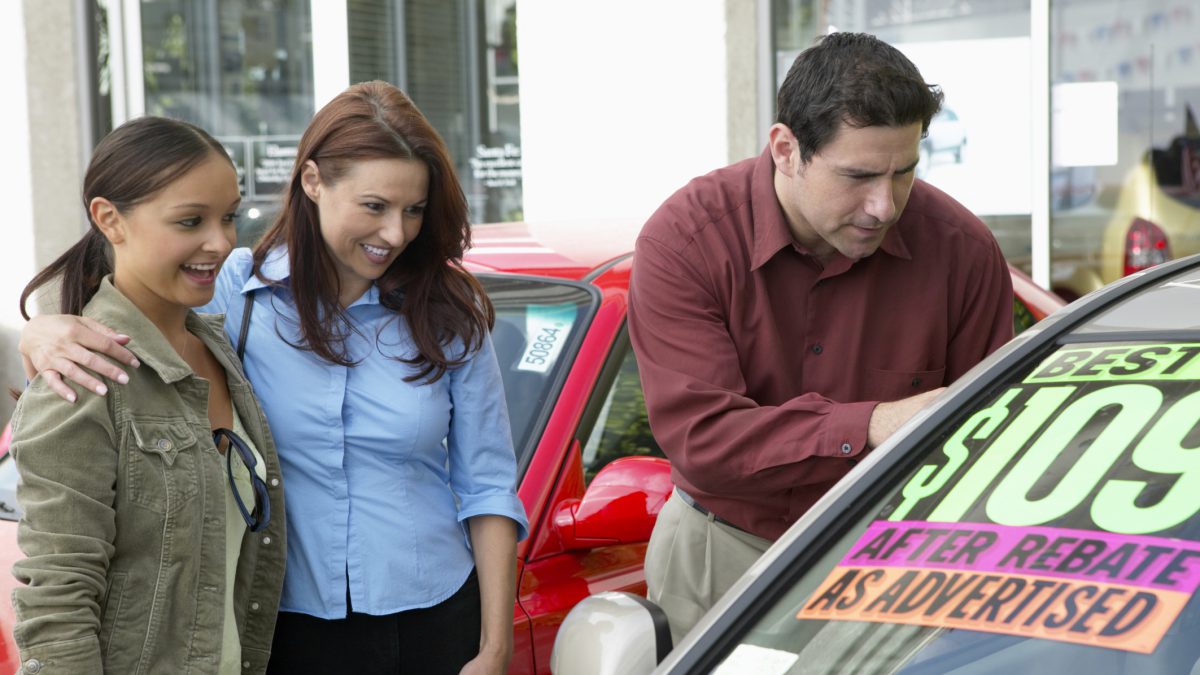Financing Your Wheels: How Much Should I Budget for a Down Payment on a Car?
Financing Your Wheels: How Much Should I Budget for a Down Payment on a Car?
A new car will lose a huge amount of its value the minute you drive it off of the sales lot. Typically, depreciation in the first year is between 20 and 25 percent, while the average buyer makes a down payment of only 5 percent. That amount is often not enough to cover the sales tax and other fees, let alone the vehicle’s depreciation. The result is that many buyers find themselves upside-down on their vehicle purchase, immediately owing more than the vehicle could sell for.
Still, financial realities may require budgeting a low amount for your down payment, and, according to Mike Roderick, business manager at Central Maine Motors in Waterville, Maine, you may be able to get away with putting less down on your new car purchase than you think.
How Is Your Credit?
Your credit score is one factor that will dictate how much money you will need to put down on the car loan. If your credit history is good, the bank will consider you a lower risk and will not require you to put as much money down. This is because the lender has less risk in making the loan.
If your credit is not as good, a bank will probably require more of a down payment on the car loan. This is because of the higher risk that the lender may need to repossess the car and sell it, potentially at a loss. “A bank looks at credit score, in terms of the loan-to-value ratio,” says Roderick. “Someone with great credit, the bank may buy a loan contract for 130 to 140 percent of the book value of the car.” For instance, if the book value of the car is $20,000, with an extremely good credit score you may be able to borrow $24,000, and use the extra amount to pay taxes, extended warranties or other fees.
On the other hand, Roderick says, “With lower credit scores, the bank will buy at a lower loan-to-value ratio. In some cases, the bank will fund less than the book value of the car.” Being in this situation means that you would have to budget more money down to complete a purchase.
How Much Cash Do You Have Available?
The amount of cash in your bank account may dictate how much of a down payment you can swing. By allocating more of your available funds, you can lower your monthly payment without lengthening the term of your loan, or you can pay the car off sooner while keeping the same monthly payment. You do not want to deplete cash that you will need for other purposes, however, such as your emergency fund or money allocated for college or retirement savings. “For many, loans are so cheap now, in terms of interest rates. It may be a good decision to borrow as much as possible,” says Roderick. By borrowing more, you can conserve your cash and keep it for other potential needs.
Your Trade-in as a Down Payment
Not all down payments have to be in cash. If you have owned your present vehicle for a while, you may have equity in your trade that counts as money down on your new loan. “Positive equity in the trade is exactly the same as money put down.” You are more likely to have trade equity if you made a substantial down payment on your present vehicle.
If you have substantial positive equity in your trade-in vehicle, you can get away with budgeting much less toward your down payment on your new car. In some cases, you may not need to pay any cash at all, and simply buy based on your trade-in.
Negative Equity in Trade
If you have not owned your present vehicle for very long, meaning that you haven’t made many payments on the loan, you could have negative equity in the car. Roderick explains, “Negative equity is when somebody’s trade-in value of their vehicle is below their payoff.” While negative equity had been a problem with financing a vehicle, the situation has improved dramatically. “Banks are much more receptive to a buyer with negative equity in their trade than they were in, say, 2009.”
Still, negative equity in your trade-in vehicle may require you to inject more capital into your purchase, particularly if you have some credit challenges, causing lenders to want to fund your loan at less than the retail value of the vehicle.
Year of the Vehicle
While some lenders may want a higher down payment on a used vehicle or one with more miles on it, other lenders will step up and finance these cars as readily as newer vehicles. “The loan-to-value ratio that a lender will allow is not affected as much by a year or mileage as it is by the credit score of the borrower.” So will a buyer be able to finance a 10-year-old vehicle at 100 percent? “Yes,” Roderick says. “In some cases, buyers may finance even more.”
Personal Situation
Basically, it comes down to a couple of factors. If you have questionable or challenged credit, or do not have much of a credit history, you will need to budget more money for the down payment of your vehicle. You may need to budget as much as 20 percent of the vehicle’s purchase price.
With a better credit score, you may be able to budget a lower amount toward your down payment, if you choose. However, you still may want to budget a higher down payment in order to have a smaller loan, to avoid being upside-down on the vehicle, and to keep your payments lower, as well.
Quicken has made the material on this blog available for informational purposes only. Use of this website constitutes agreement to our Terms of Use and Privacy Policy. Quicken does not offer advisory or brokerage services, does not recommend the purchase or sale of any particular securities or other investments, and does not offer tax advice. For any such advice, please consult a professional.



